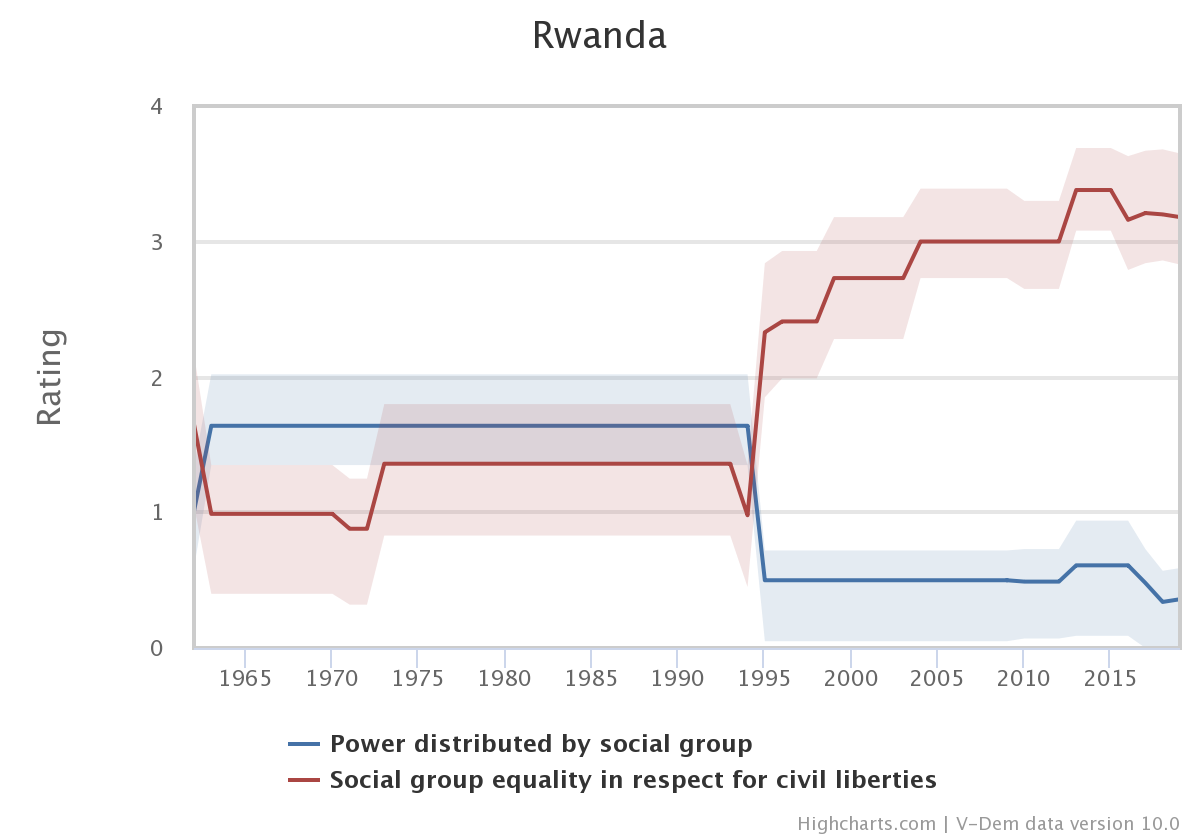Over a quarter century since the Rwandan Genocide, Progress and Challenges
By: Lukas Bernhard
Apr 06, 2020
April 6 marks the anniversary of the start of the 1994 genocide in Rwanda, which led to the deaths of an estimated 800,000 to 1,000,000 people, mostly of the minority of Tutsi ethnic group. After 26 years, Rwanda is developing rapidly economically and is considered a model for many African states. The government strives to overcome previous divisions between social groups by emphasizing a shared Rwandan identity. Talking about ethnicity is a big taboo.
Despite this, last year the Economist reported that tensions persist and “everyone knows who is who” even if they do not openly discuss it. To evaluate this claim, we use two of V-Dem’s indicators on exclusion by social group: equality in respect for civil liberties and power distribution. Both are measured on a scale from 0 (high exclusion) to 4 (no exclusion).
The graph reveals two contrasting trends. Social group equality in respect for civil liberties has considerably improved since the genocide, so that most of the Rwandan people enjoy the same level of civil liberties. Yet, political power in Rwanda is increasingly monopolized by one social group in the past decades.
What explains these different trends? First, although speaking about ethnic divisions is frowned upon, these divisions may still persist in people’s heads, as highlighted in the Economist article above. Second, Rwanda has another ethnic minority – the Twa – who are often disadvantaged and on the margins of society. Finally, since assuming power in 1994, the former Tutsi-militia, the Rwandan Patriotic Front (RFA) is the dominant political party and their leader, President Paul Kagame faces little political competition. Thus, while equality in respect for civil liberties may have improved, exclusion of many social groups when it comes to political power persists.
To learn more about V-Dem indicators and our online analysis tools, visit www.v-dem.net.


